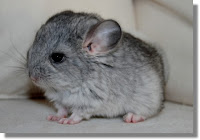-Animalia cells do not contain cell walls that characterize plant cells
-Nine to 10 million species of animals
-THE most complex organisms on Earth
Body plan-
-ALL are multicellular
Divergent event-
-Charles Darwin’s Theory of Evolution
-natural selection (survival of the fittest)
-Developed from the first organisms on Eath (bacteria)
-Grew more and more complex
-Related to fungi more than any other kingdom
-Only the ones who had the traits for their environment survived and moved on to reproduce
Metabolism-
-ALL are heterotrophs (obtain energy from or by consuming other organisms)
-ALL require oxygen for metabolism
Digestion-
-Intracellular – most have a digestive system
-consists of: mouth, esophagus, stomach, liver, small/large intestine, pancreas, colon, rectum
Circulation-
-Closed AND open
-Closed – blood closed at all times within vessels of different size and wall thickness, blood pumped by heart through vessels, does not fill body cavities
-Open – pumped by heart into body cavities where tissues are surrounded by blood
-pumps, three- and four-chamber hearts
Respiration-
-Gills – extracts dissolved oxygen from water
-fish, other aquatic animals
-Book lungs – look like books, maximize surface area with air/gas exchange
-arachnids
-Lungs – mouth, nose, oropharynx, nasopharynx, larynx, trachea, bronchi, bronchioles, alveoli
-tetrapods, few fish, few snails
-two lungs on either side of heart in complex mammals (humans)
Nervous-
-Brain
-frontal, parietal, occipital, temporal lobes
-Nerve net
-simple nervous system found in cnidaria and echinodermata phyla
-Ganglia/ring
-found in insects such as the cockroach
Examples-
-Oryctolagus cuniculus (Rabbit)
-Chinchilla lanigera (Chinchilla)
Phylum: Nematoda
-80,000 known parasitic worms
-Bilaterally symmetrical
-Body cavity is pseudocoel (its body flied is under high pressure)
-No circulatory system
-Feed on everything
-Don't usually live in dry places
Example- Roundworm
Phylum: Mollusca
-110,000 known species
-Most diverse in the world
-Mantle with cavity used for breathing and excretion
-Has a pair of kidneys
-Most have a shell of some sort
-Pearls from oysters were among the earliest forms of money
Example- Snail
Phylum: Annelida
-15,000 individual segmented worms
-Body possesses three separate sections: a prosomium, a truck, and a pygidium
-Has a true closed circulatory system
-No true respiratory organs
Example- Common earthworm
Phylum: Chordata, Subphylum: Vertebrata
-50,000 species of animals
-Structure is composed of numerous tissues and organs
-Have vertebrae - hollow structures which combine to make the spinal column
-made of cartilage or bone and cartilage
-surrounds and protects the central nerve cord
Class: Myxini
-Live in deep water
-Feed on carrion (dead, rotting flesh) as well as polychaete worms
-Use tentacles around their mouths to locate prey
-Single nostril opens into pharynx
-Example- Hagfish
Class: Cephalspidomorphi
-Hatch/breed in fresh water, mature in marine
-Parasitic as adults - have a suction-like mouth that grasps onto other fish and puts a hole in their skin
-Have buccal glands that secret an anticoagulant to ensure free-flowing food source
-Larvae are called ammocoetes
-Example- Lamprey
Class: Chondrichthyes
-Paired nostrils
-Skeleton is completely cartilage - no endoskeletal bone
-No swim bladder
-Example- Stingray
Class: Osteichthyes
-Endoskeleton made up of bone
-Jaws and paired appendages
-Arose in freshwater, moved into saltwater
-Example- Ocean Sunfish
Class: Amphibia
-Ectothermic - regulates body temperature by moving to different climates within its environment (cold-blooded)
-Eggs must be laid in water or in a very moist environment
-young develop with gills and live in the water as tadpoles
-Example- Poison Dart Frog
Class: Reptilia
-Some of the first land-only vertebrates
-Ectothermic, heliotherms - can regulate body temperature using solar radiation
-Example- American Crocodile
Class: Aves
-Four-chambered heart
-Feathers
-Bill instead of teeth
-Endothermic - able to maintain a constant body temperate, regardless of its surroundings
-Example- Bald Eagle
Class: Mammalia
-Has hair/fur
-Mammary glands to give milk to young
-Endothermic
-Dental bones
-Example- Dogs (Yorkshire Terrier)













No comments:
Post a Comment